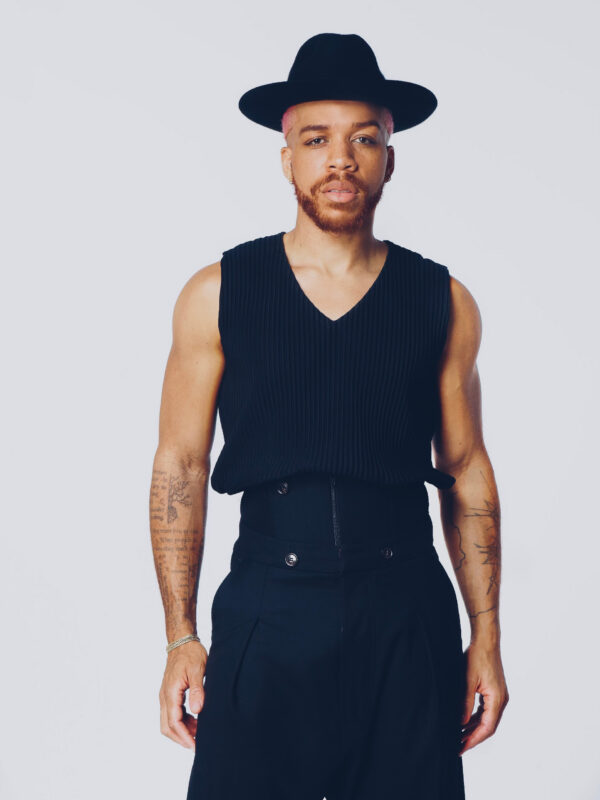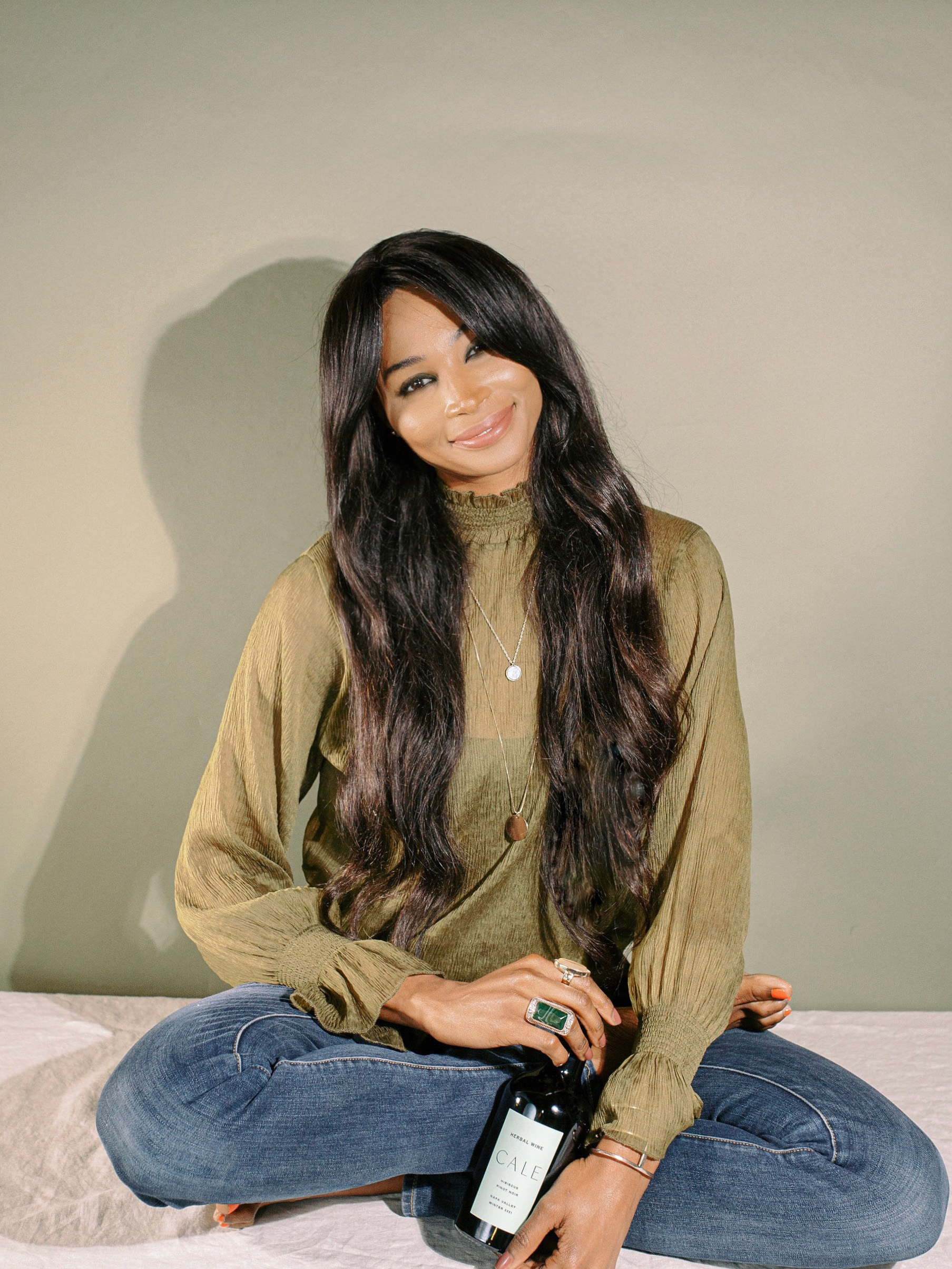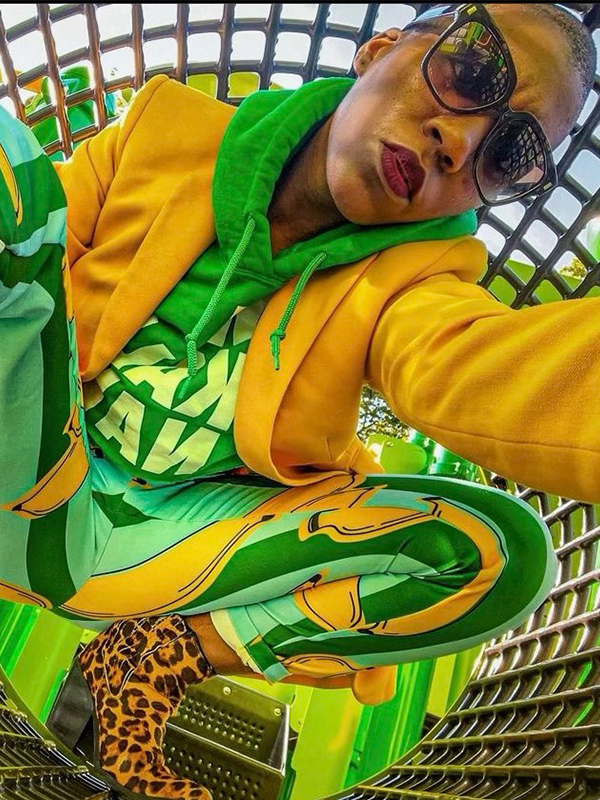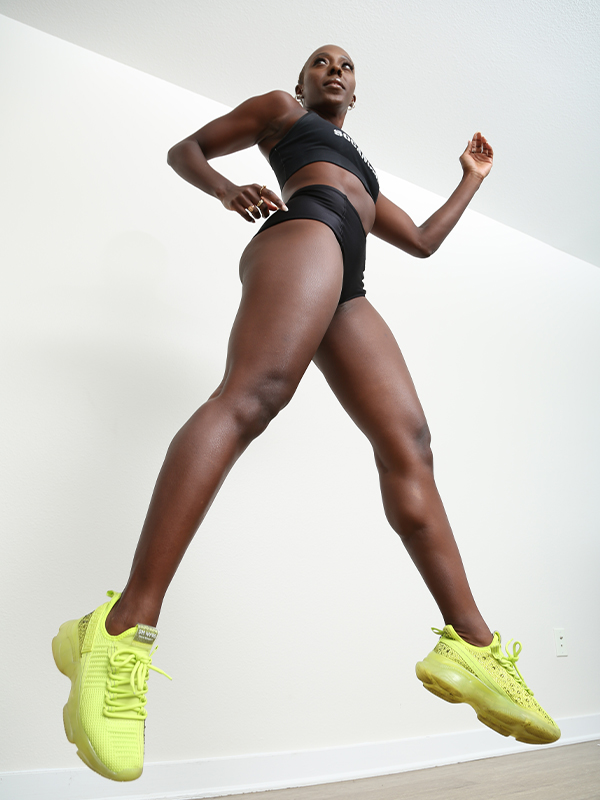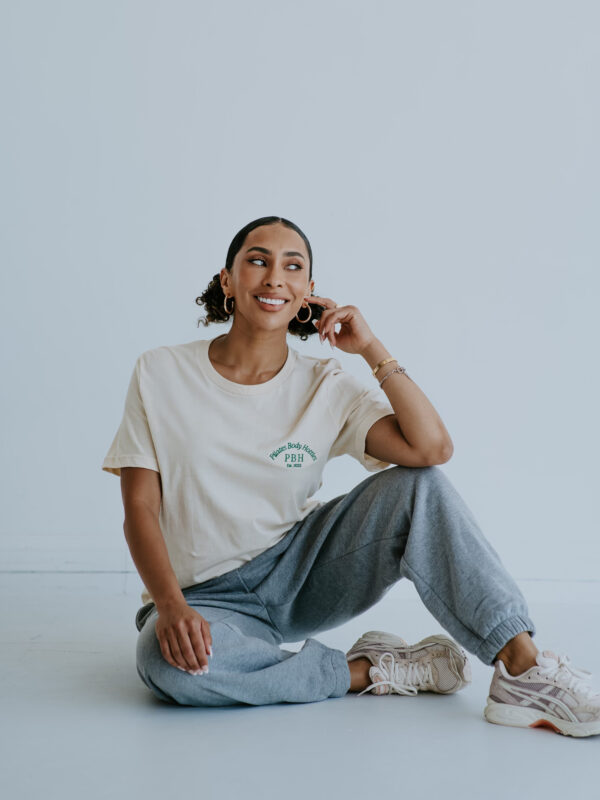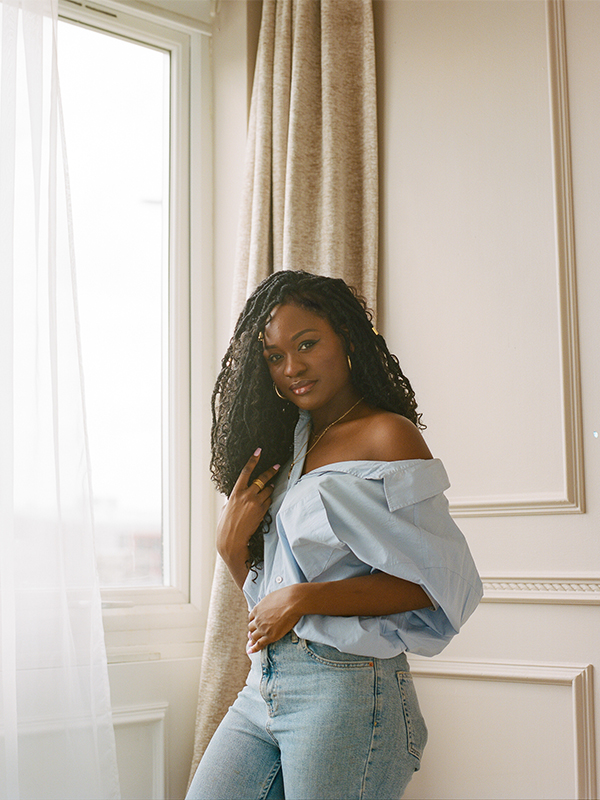The movement around embracing all hair textures may be growing, but for Vernon François, championing natural hair is nothing new. The British-born, LA-based celebrity hairstylist, whose portfolio of clients includes Lupita Nyong’o, Serena Williams, Willow Smith and Lil Naz X, prides himself on being at the forefront of haircare education.
Through philanthropic partnerships like his work with the It Gets Better Project and as the founder and creative director of his own brand, VERNON FRANÇOIS® Haircare, François is working to comb through the beauty industry’s texturism problem.
François spoke to Sweet July about fostering more accessible pathways for underserved consumers looking to take care of their crowns.
What sparked your passion for hairstyling?
Vernon François: My passion for hair began in my childhood. Growing up in a Rastafarian family, hair was a major part of my environment and almost gave structure to our week because Sundays were always the day when me and my brothers would have our hair braided. I vividly remember it: rice and peas cooking in the kitchen, sitting by my mother’s knees going through this experience, which was always so painful for me. My scalp was sensitive. The comb hurt. Tension on my scalp was tight. There was this belief—and many people still think this—that tightly braided hair will look better and last longer, but I found out through teaching myself that tidy and long-lasting braided hairstyles don’t need to be torturous. My mum said for me to go learn how to do it myself, fed up of me complaining about how uncomfortable it was, and the end result never even looked that great, so I was like, “OK then, I’m going to do this,” and set about figuring it out. I taught myself to braid, loc and twist from age eight. It became an obsession, like a puzzle to be solved, figuring out pain-free ways of doing hair.
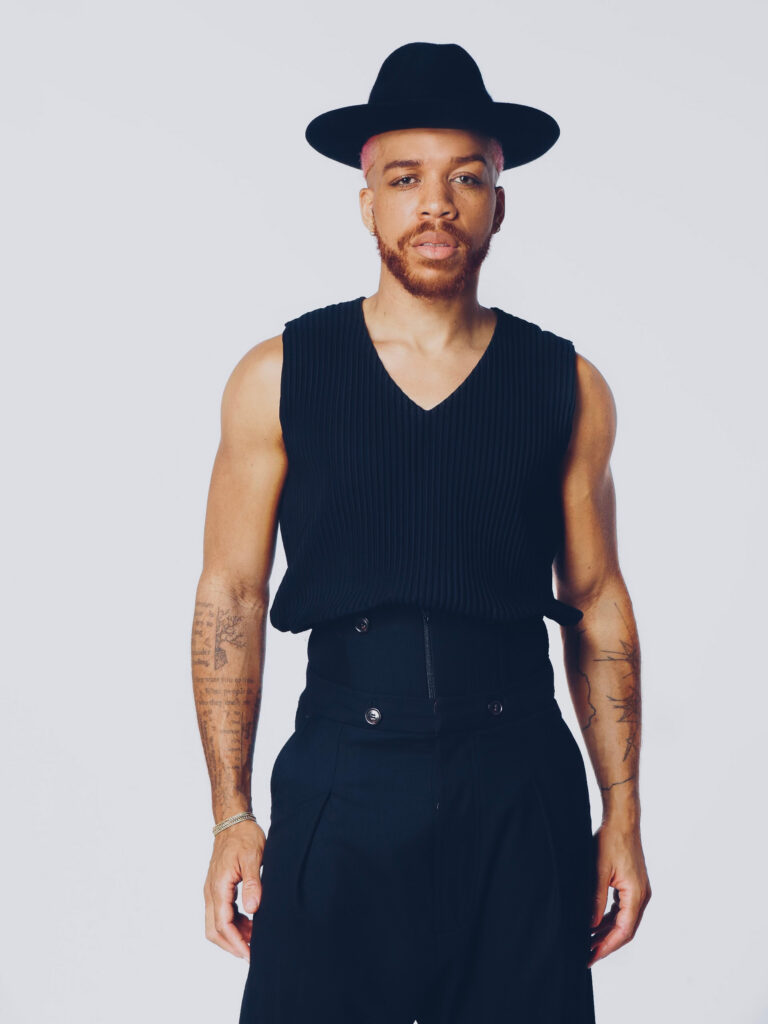
“When it comes to speaking about curly and afro hair textures, language is so important.”
How did the idea for your haircare line emerge?
VF: The idea for my own brand had been brewing for 15 years or more before launching in 2016. Working at the salon in London at age 14, I learned first-hand about product performance, the best ingredients by hair type, how kinks and curls respond in different environments, and so I was perfectly placed to solve my clients’ frustrations and what they told me what was lacking for them in beauty.
Pioneering my own haircare line felt like my calling in the UK, seeing big brands not serving all hair textures as my clients wanted. In the early days, my clients would tell me how frustrated they were having to venture out of town to a specialist store to get curly and afro hair products because they weren’t available in shops on the high street in central London. Then, and even now, seeing haircare products separated on store shelves with a small section, if at all, for “ethnic hair” never sat right with me. I’ve always believed there is a different way of doing things.
Can you share some tips on how to best approach protective styling?
VF: Protective hairstyles give hair a chance to rest and help keep it in good condition by keeping moisture in the strands. Some examples are bantu knots, braids, even wearing a wig is protective because it shields hair from the elements. Any hairstyle that tucks the ends of the hair away can be protective. They give hair a break from heat styling and limit the effects of humidity.
It’s important to be aware of the irony of talking about “protection” because taking that word at face value can lead to complacency. A false belief is that a protective hairstyle can be done and that’s that. Like, people who get box braids before going on holiday, then do nothing with them until they take them out. Preparation and maintenance are both key—taking time to massage the scalp with the pads of your fingertips, keeping it in good condition with a lightweight leave in conditioner, oiling the hair, being mindful of the ratio of synthetic hair to your natural hair when braiding, not leaving a protective hairstyle in so long. Other tips: Taking a break from protective hairstyling, letting the scalp rest without tension on the hair and head, and just letting hair be free is worthwhile, too.
What would you like to see more of in the hair care industry?
VF: I’d like it to be the norm that all hairdressers can confidently welcome all individuals into their chair and be competent in creatively working with all hair textures. Over and again, hairdressers in multiple environments—from salons to dressing rooms—have made clients with big, dense, fluffy hair feel ashamed, embarrassed, not worthy, like a problem, a difficult or inconvenient customer. The level of injustice and mental damage this creates is unbearable. No one should have to experience that.
I’d also like to see gendered conversations and the labeling of hairdressing services addressed. The idea of men’s and women’s haircuts is stereotypical and can create anxiety for individuals who just want to rock a particular style. No matter how you identify, you are entitled to wear whatever hairstyle makes you feel most comfortable. A cut might be long, mid, short, cropped, so let’s keep the conversation about hair. Gender-fying hairstyles is unfair to humanity. Our world is beautiful for its variety, and everyone who steps into a salon should be made to feel at ease, welcome, and valued for who they are as an individual.
What advice do you have for people looking to embrace their hair’s true texture?
VF: Better than any tool or product, the first essential thing to set anyone up for success with working in harmony with the hair they were born with is mindset. The way you mentally approach what you’re doing enables you to create something incredible with however much or little you have.
Know that hair behaves differently on different days and individual hair journeys are ongoing. I am still on mine, still in the process of unpacking this alongside my clients, my customers and most recently through my relationship with my daughter. Never underestimate the importance of choosing kind words to talk about your hair, taking the time to share caring hair rituals, approaching hair detangling and styling from a place of love, consciously choosing to be patient, or switching to something different if what you set out to do with your hair isn’t going according to plan. Encouraging hair love and acceptance, genuinely knowing that what you were born with is good enough, being able to see the beauty in your hair’s true texture—all these things affect your self-confidence, which is linked to achieving greatness, happiness and a positive relationship with your own head of hair.
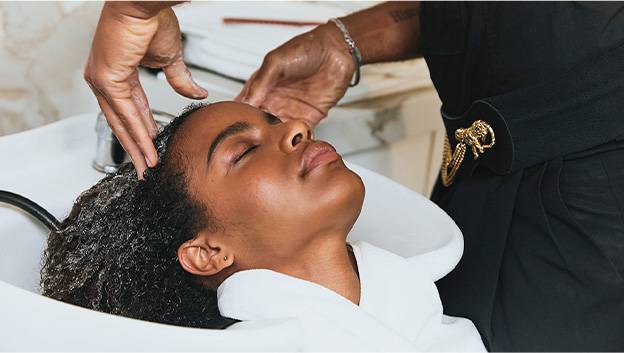
How have you seen the haircare industry evolve in how it represents curly hair textures?
VF: When it comes to speaking about curly and afro hair textures, language is so important. For so long, negative words have been used in haircare spaces in relation to these hair textures. With my own haircare line, I’m always highly conscious of this and constantly strive to do better. The packaging on my leave-in conditioner says ‘Frizz Love’ instead of frizz free now, for example.
Thanks to my dyslexia, I define things literally and it’s important to use correct words to describe hair to give everyone the best chance of understanding and managing their relationship with their hair. “Textured” and “natural” are often used as euphemisms for kinky, coily, curly or afro hair but all hair has a texture, and all hair can be natural when it’s in an untreated, unmanipulated state. In the future, I hope for hair to be talked about solely in relation to its texture—kinky, coily, curly, wavy or straight for accuracy—and for the best hair education outcomes for individuals all around.
This interview has been edited and condensed for clarity.
